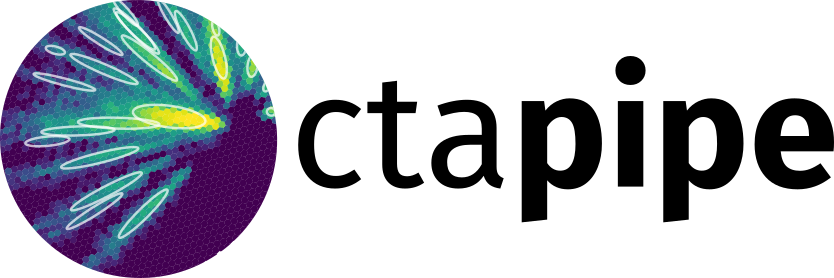import numpy as np
from numba import njit
from ..core import TelescopeComponent
from ..core.env import CTAPIPE_DISABLE_NUMBA_CACHE
from ..core.traits import BoolTelescopeParameter, FloatTelescopeParameter, Int
from ..instrument import SubarrayDescription
__all__ = [
"ImageModifier",
]
def _add_noise(image, noise_level, rng=None, correct_bias=True):
"""
Create a new image with added poissonian noise
"""
if not rng:
rng = np.random.default_rng()
noisy_image = image.copy()
noise = rng.poisson(noise_level, size=image.shape)
noisy_image += noise
if correct_bias:
noisy_image -= noise_level
return noisy_image
@njit(cache=not CTAPIPE_DISABLE_NUMBA_CACHE)
def _smear_psf_randomly(
image, fraction, indices, indptr, smear_probabilities, seed=None
):
"""
Create a new image with values smeared across the
neighbor pixels specified by `indices` and `indptr`.
These are what defines the sparse neighbor matrix
and are available as attributes from the neighbor matrix.
The amount of charge that is distributed away from a given
pixel is drawn from a poissonian distribution.
The distribution of this charge among the neighboring
pixels follows a multinomial.
Pixels at the camera edge lose charge this way.
No geometry is available in this function due to the numba optimization,
so the indices, indptr and smear_probabilities have to match
to get sensible results.
Parameters:
-----------
image: ndarray
1d array of the pixel charge values
fraction: float
fraction of charge that will be distributed among neighbors (modulo poissonian)
indices: ndarray[int]
CSR format index array of the neighbor matrix
indptr: ndarray[int]
CSR format index pointer array of the neighbor matrix
smear_probabilities: ndarray[float]
shape: (n_neighbors, )
A priori distribution of the charge amongst neighbors.
In most cases probably of the form np.full(n_neighbors, 1/n_neighbors)
seed: int
Random seed for the numpy rng.
Because this is numba optimized, a rng instance can not be used here
Returns:
--------
new_image: ndarray
1d array with smeared values
"""
new_image = image.copy()
if seed is not None:
np.random.seed(seed)
for pixel in range(len(image)):
if image[pixel] <= 0:
continue
to_smear = np.random.poisson(image[pixel] * fraction)
if to_smear == 0:
continue
# remove light from current pixel
new_image[pixel] -= to_smear
# add light to neighbor pixels
neighbors = indices[indptr[pixel] : indptr[pixel + 1]]
n_neighbors = len(neighbors)
# we always distribute the charge as if the maximum number
# of neighbors of a geometry is present, so that charge
# on the edges of the camera is lost
neighbor_charges = np.random.multinomial(to_smear, smear_probabilities)
for n in range(n_neighbors):
neighbor = neighbors[n]
new_image[neighbor] += neighbor_charges[n]
return new_image
[docs]
class ImageModifier(TelescopeComponent):
"""
Component to tune simulated background to
overserved NSB values.
A differentiation between bright and dim pixels is taking place
because this happens at DL1a level and in general the integration window
would change for peak-searching extraction algorithms with different background levels
introducing a bias to the charge in dim pixels.
The performed steps include:
- Smearing of the image (simulating a worse PSF)
- Adding poissonian noise (different for bright and dim pixels)
- Adding a bias to dim pixel charges (see above)
"""
psf_smear_factor = FloatTelescopeParameter(
default_value=0.0, help="Fraction of light to move to each neighbor"
).tag(config=True)
noise_transition_charge = FloatTelescopeParameter(
default_value=0.0, help="separation between dim and bright pixels"
).tag(config=True)
noise_bias_dim_pixels = FloatTelescopeParameter(
default_value=0.0, help="extra bias to add in dim pixels"
).tag(config=True)
noise_level_dim_pixels = FloatTelescopeParameter(
default_value=0.0, help="expected extra noise in dim pixels"
).tag(config=True)
noise_level_bright_pixels = FloatTelescopeParameter(
default_value=0.0, help="expected extra noise in bright pixels"
).tag(config=True)
noise_correct_bias = BoolTelescopeParameter(
default_value=True, help="If True subtract the expected noise from the image."
).tag(config=True)
rng_seed = Int(default_value=1337, help="Seed for the random number generator").tag(
config=True
)
def __init__(
self, subarray: SubarrayDescription, config=None, parent=None, **kwargs
):
"""
Parameters
----------
subarray: SubarrayDescription
Description of the subarray. Provides information about the
camera which are useful in calibration. Also required for
configuring the TelescopeParameter traitlets.
config: traitlets.loader.Config
Configuration specified by config file or cmdline arguments.
Used to set traitlet values.
This is mutually exclusive with passing a ``parent``.
parent: ctapipe.core.Component or ctapipe.core.Tool
Parent of this component in the configuration hierarchy,
this is mutually exclusive with passing ``config``
"""
super().__init__(subarray=subarray, config=config, parent=parent, **kwargs)
self.rng = np.random.default_rng(self.rng_seed)
[docs]
def __call__(self, tel_id, image, rng=None):
dtype = image.dtype
if self.psf_smear_factor.tel[tel_id] > 0:
geom = self.subarray.tel[tel_id].camera.geometry
image = _smear_psf_randomly(
image=image,
fraction=self.psf_smear_factor.tel[tel_id],
indices=geom.neighbor_matrix_sparse.indices,
indptr=geom.neighbor_matrix_sparse.indptr,
smear_probabilities=np.full(geom.max_neighbors, 1 / geom.max_neighbors),
seed=self.rng.integers(0, np.iinfo(np.int64).max),
)
if (
self.noise_level_dim_pixels.tel[tel_id] > 0
or self.noise_level_bright_pixels.tel[tel_id] > 0
):
bright_pixels = image > self.noise_transition_charge.tel[tel_id]
noise = np.where(
bright_pixels,
self.noise_level_bright_pixels.tel[tel_id],
self.noise_level_dim_pixels.tel[tel_id],
)
image = _add_noise(
image,
noise,
rng=self.rng,
correct_bias=self.noise_correct_bias.tel[tel_id],
)
image[~bright_pixels] += self.noise_bias_dim_pixels.tel[tel_id]
return image.astype(dtype, copy=False)

